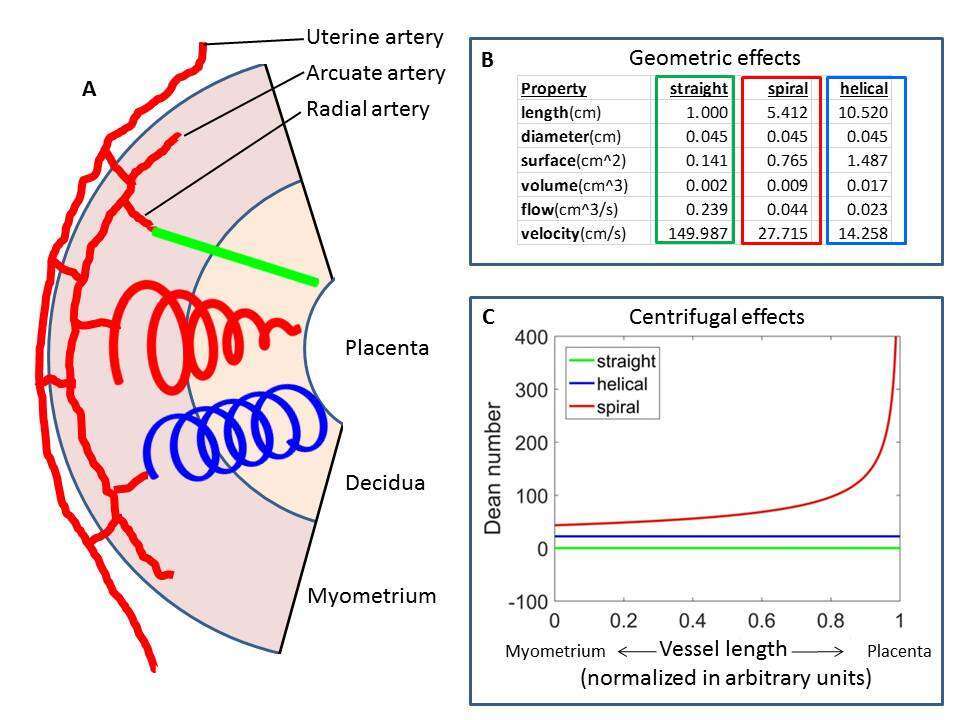
Geometric and Hemodynamic Characterization of Blood Flow in Human Uterine “Spiral Arteries”
2Department of Anesthesiology and Critical Care Medicine, Hadassah Hebrew University Medical Center
3Department of Obstetrics and Gynecology, Washington University School of Medicine
4Department of Anesthesiology, Washington University School of Medicine
Background: In pregnancy, “spiral arteries” are transformed into high-flow, low-pressure vessels. Impaired “spiral artery” remodeling is associated with preeclampsia, IUGR and prematurity. We consider a geometric and hemodynamic mathematical model of blood flow to the human placenta to explore the effect of variations of coiling on placental blood flow.
Methods: We examined three configurations of ”spiral arteries”: straight (green), helical (blue), and spiral (red) (Fig. 1 a). We calculated the "geometric" effects of curvature, where deviations from a straight vessel add to vessel length and resistance, and the "hemodynamic" effects of curvature where centrifugal forces increase resistance to flow due to secondary flow eddies. As a measure of the latter, we use a variant of the Dean number (D) defined by:
D = √ 2r/R (Gr3ρ/μ2)
where r is vessel radius, R is radius of coil curvature, G is gradient driving flow, ρ is blood density, and µ is blood viscosity.
Results: The geometric effects of curvature were lower in spiral configuration than in helical, as the uncoiled length of vessel was shorter (Fig. 1 b). The Dean number is zero in the straight vessel, constant in the helical vessel, and increases precipitously in the spiral vessel.
Conclusions: Variations in coiling have substantial effects on projected flow and pressure into the intervillous space. Mathematical modeling of blood flow in “spiral arteries”, based on accurate morphological data, would enhance understanding of structure and function in the uteroplacental circulation in normal and pathological pregnancy.

Powered by Eventact EMS